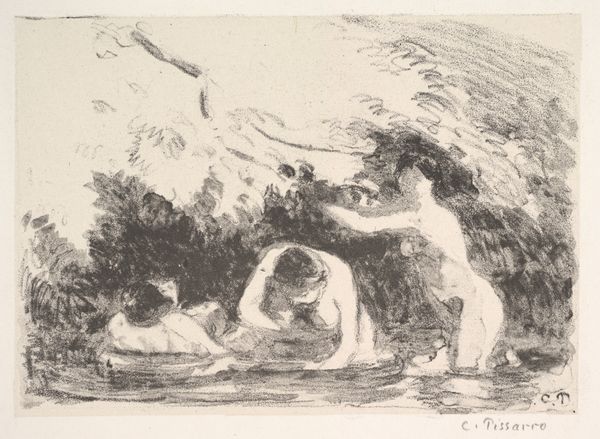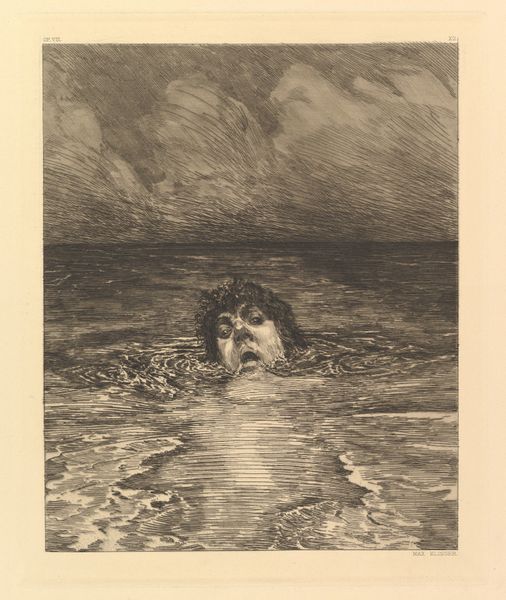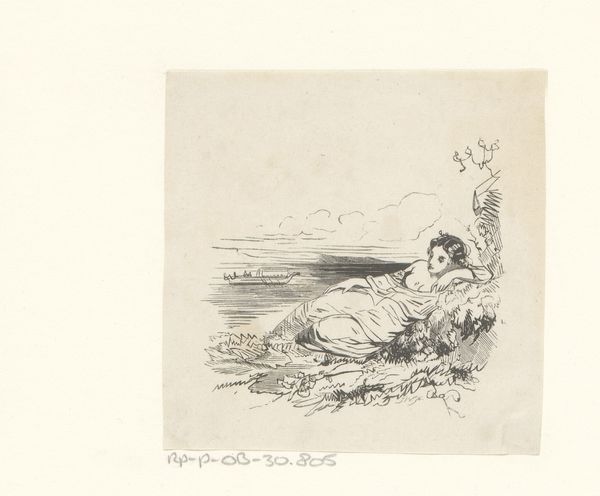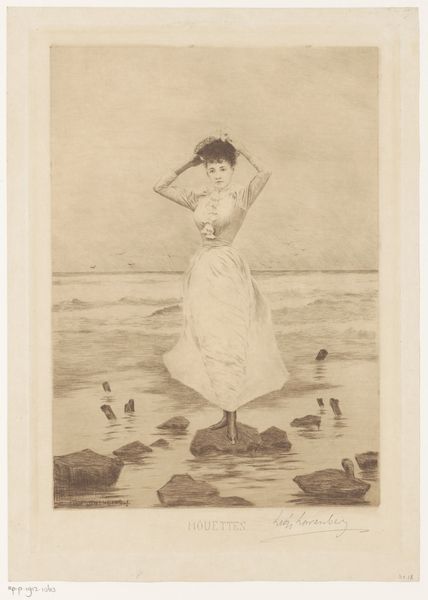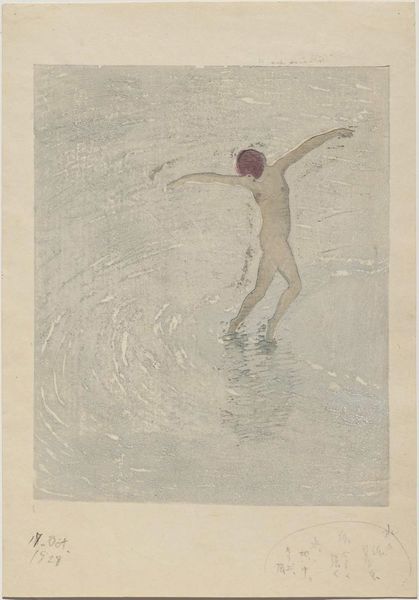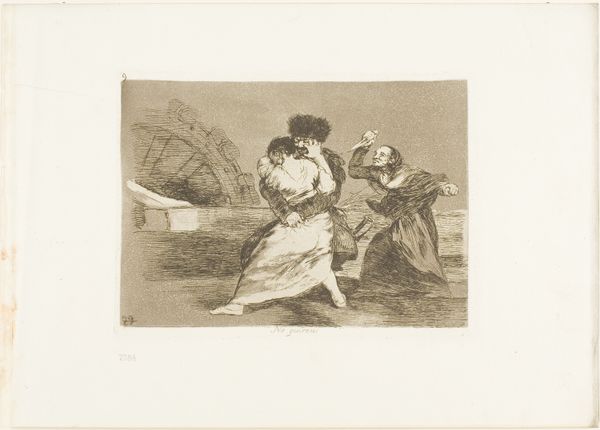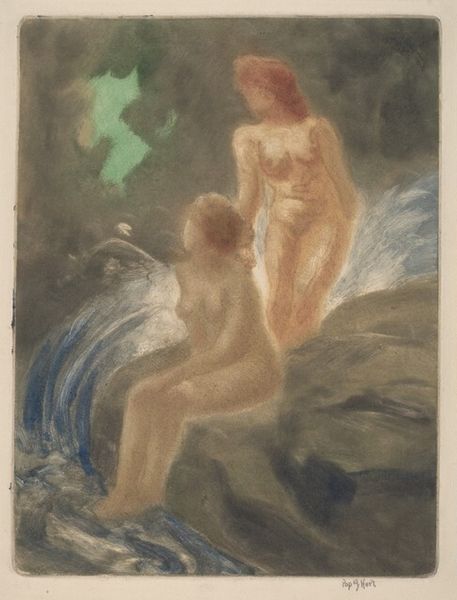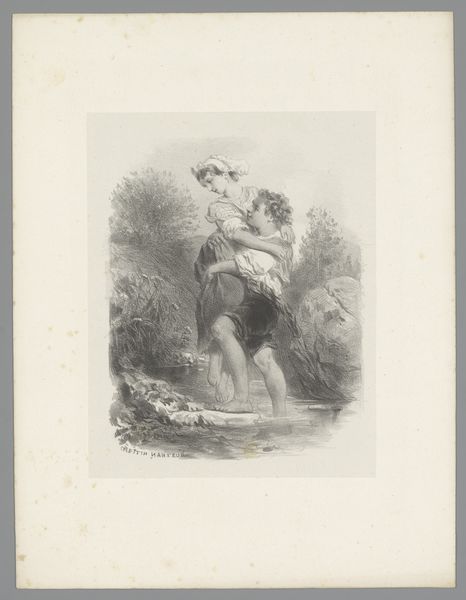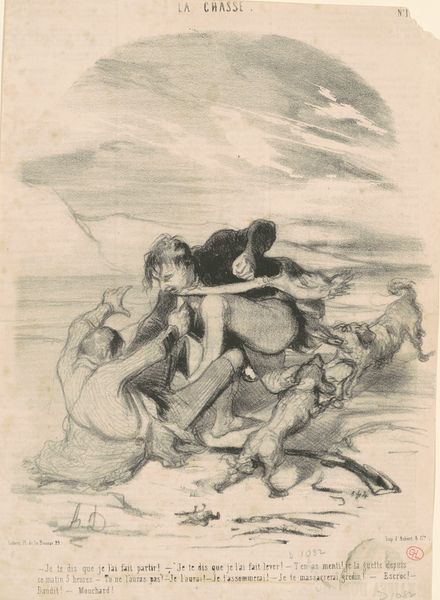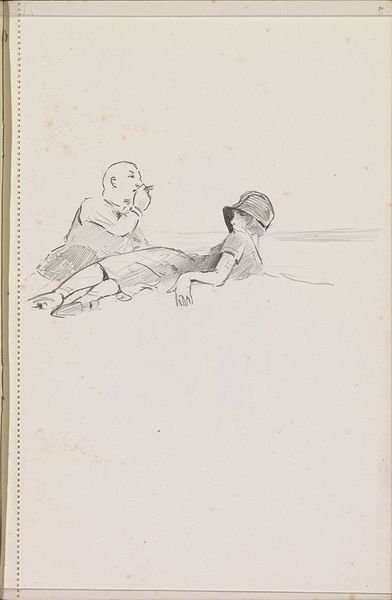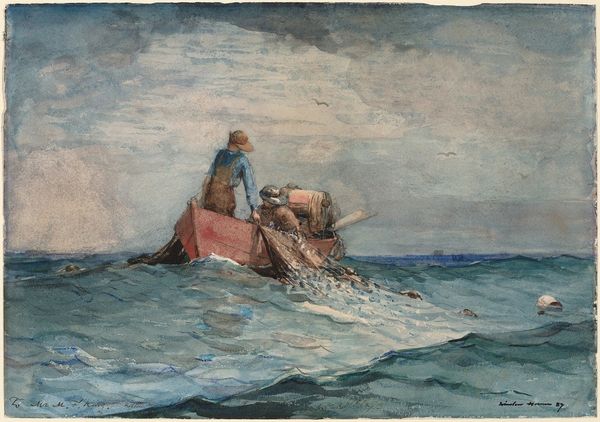
drawing, watercolor
#
portrait
#
drawing
#
landscape
#
watercolor
#
watercolour illustration
#
genre-painting
#
watercolor
Dimensions: sheet: 17.8 x 16.1 cm (7 x 6 5/16 in.)
Copyright: National Gallery of Art: CC0 1.0
Curator: Allow me to introduce you to Alfred Grévins watercolor, entitled “Male and Female Bathers.” Editor: Immediately, I’m drawn to the watercolor technique. See how the artist lets the pigments flow freely, creating soft transitions between light and shadow. There’s a looseness, an improvisational quality here. Curator: That quality resonates, doesn't it? Look at the stark juxtaposition in the representation of gender and the societal expectations for modesty versus exposure in aquatic spaces during Grévins era. Notice the female figure, constrained by her bathing cap, in contrast to the bare-headed male figure? It speaks volumes. Editor: You're right to point out the contrast. The color palette also supports that division; warm tones for the female and cooler hues for the male, yet both are merged by the consistent aquatic flow around them. The application itself—the way the watercolor defines form while also blurring it—hints at something more than simple observation. Curator: Precisely. This seemingly innocent genre-painting is laden with subversive social commentary. We are invited to ponder themes of class, leisure, and the burgeoning culture of seaside tourism that marked rapid societal transformations. Grévins skillful execution doesn’t mask but enhances the cultural complexities beneath. Editor: Thinking about those compositional elements together makes it more impactful, for sure. Thank you for teasing that out, and helping me go beyond just noting its charm. Curator: And you helped illuminate the visual strategies, underscoring that form, line, color, and composition are far from neutral, that their effects play such an essential part in what the piece as a whole can signify.
Comments
No comments
Be the first to comment and join the conversation on the ultimate creative platform.
